Here is the Epidote pricing guide for buyers and sellers. Feel free to use this as a point of reference when valuing Epidote.
As prices for Epidote change, I’ll update this page with the new prices I see at the local gem and mineral shows plus I’ll be going to the Tucson Gem and Mineral show to ensure the pricing is as accurate as possible.
There are three types of Epidote you’ll be purchasing if you choose to. The first type will be specimens that are made up of Epidote only. For the most part, this material is relatively inexpensive and sold by the piece.
The second type will again be in specimen form but Epidote will be attached to other minerals or it could be an inclusion inside of a crystal. These varieties have the highest potential to bring the most money. For the most part, this material is sold by the piece.
The third type will be faceted gemstones but there’s not a ton of value with these stones because they tend to be on the darker side.
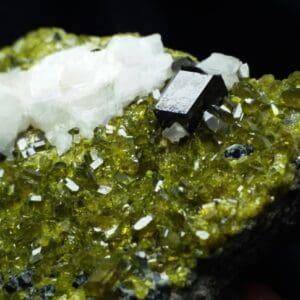
How to determine Price and Cost
When determining the value of the gemstone you will be using GIA guidelines which means color, clarity, carat weight, and cut. You’ll want to look at each one of these individually and then circle back when finished to evaluate the stone as a whole.
Color is going to be the most important factor when determining the value of gemstones. Clarity and carat weight are tied for the second most important factor.
Before you go any further you need to ensure you have identified Epidote correctly.
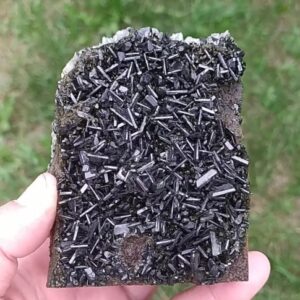
Color – The more intense the color the more valuable the stone is. When dealing with warm colors, think of red and orange, you’ll want to determine if there are brown undertones. If you can’t see brown undertones then the color should be very vibrant. The more vibrant and saturated the color the more expensive the gemstone. If the gemstone has a unique “neon-like glow” then it will demand the highest price per carat.
Clarity – Buyers and collectors prefer stones with no internal inclusions visible to the eye. To determine the clarity ranking you’ll need at a minimum a 10x loop and a higher-powered microscope to confirm internally flawless and flawless designations.
If you can visibly see the inclusion while holding the gemstone then the highest designation would be SI1 and if the inclusion detracts from the overall beauty of the stone then the clarity designation would be I1 – I3.
Clarity designations – FL, IF, VVS1, VVS2, VS1, VS2, SI1, SI2, I1, I2, I3

Carat – Epidote can be found in sizes ranging from below 1 carat to 5 carat or more. Generally speaking, Epidote can be sourced in carat weights of 10 or less. The larger crystals will not bring more money per carat unless they are deemed super rare.
Cut – It is sad to say but cut has the least impact on value and cost unless it affects the stone in an extreme way. For example, when you look at the stone you would be able to see through it which means light is not being reflected back to the eye. This is called a window in the stone and it would have to be quite large to impact the price. The other extreme would occur when you look at a stone and see a rough circle or oval shape inside the stone. This occurs when the stone is very shallow and it’s reflecting the rough girdle inside the stone. Note: the girdle is the edge/side of the stone where the pavilion and crown meet.
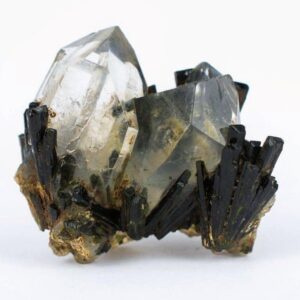
Epidote Mineral Prices
These are fairly stable and dependent upon the quality of the stone. Poorly cut stones with grey inclusions will always bring less money. The best specimens will have other unique minerals and crystals attached to the Epidote.
Epidote price per gram $50.00 – $110.00
- Only Epidote crystals
- Mostly specimens
- Common amongst mineral dealers
- Don’t overpay
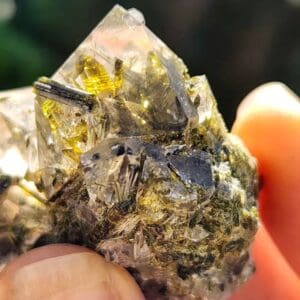
Epidote Specimen prices $2.00 – $5.00
- Can be expensive
- Needs to have other minerals and crystals attached
- Sizes will vary dramaticaly
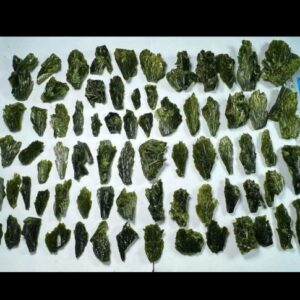
Faceted Epidote price per carat $20.00 – $65.00
- Dark green with a yellow secondary color
- Not very common
- One to five-carat stones are normal
How Valuable is Epidote?
Epidote is a lesser-known gemstone and doesn’t bring high prices but specimens can bring decent prices. If we are talking about faceted stones then there is not much value to be had other than they are cool to look at it. When it comes to specimens the value can increase depending on the quality of the specimen and the minerals attached to the Epidote crystals.
The cost of Epidote will not increase over time
Prices for faceted material will hold or decrease in value and I don’t see prices increasing anytime soon. If you’re looking to purchase Epidote then I would focus on the specimens and try to find a unique piece with other unique minerals attached.
If you’re not sure how to value a gemstone then you should consider a gemstone appraisal. Individuals acquiring gemstones through inheritance, estate sales, and auctions typically have the gemstone appraised to determine the value and to ensure the gem is what they think it is.
- Identify Enstatite - March 12, 2024
- Identify Cerussite - March 3, 2024
- Identify Bytownite - February 18, 2024
